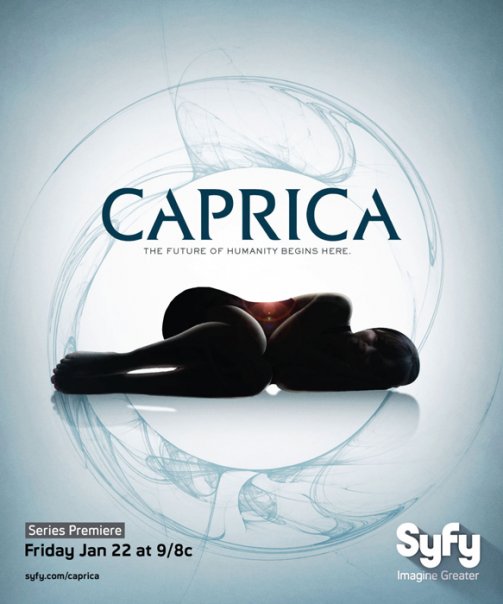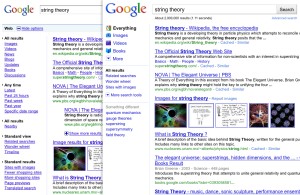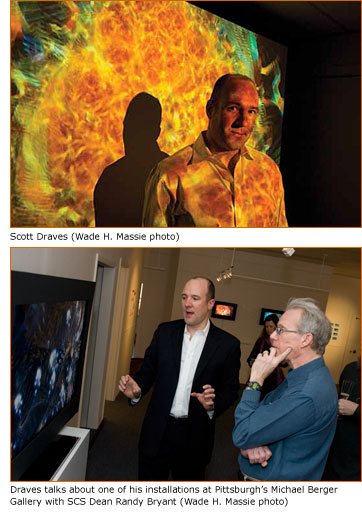May 25, 2010
Caprica Poster uses a Flame
Thanks David Oranchak for the catch:
May 21, 2010
File Prix Lux: Vote for Us
 Hello friends,
Hello friends,
We've been nominated for a new art prize, "File Prix Lux". Besides the prestige, there is a cash award if we win, and it would sure help pay for the server bills (now running about $500/month). To vote for us:
First, click here. Enter your email address and select "Dreams in High Fidelity II" from the pop-up menu labeled "Work". Type in the security code and click the black box labeled "Vote". Pay no attention to the message "your vote was successfully registered"; this is not yet true.
Then, check your inbox or your spam box for the email titled "Vote Confirmation: Dreams in High Fidelity II". Click on the link to confirm your vote. Please note your vote does not count until you have clicked on this link.
Thank you. I am really excited to show the world what we can do! If you want to learn more about Dreams in High Fidelity, see here.
May 06, 2010
Flames appear on Official Google Blog (again)
 What a nice surprise -- today Google announced their new look and the page they use to show it off has two flame images on it! It's the first image result for [string theory], and if you click through in fact 5 of the first 20 results are Flames. I guess I shouldn't be surprised because Flames have been used to represent string theory before, like when I provided content for the IMAX educational film Molecules to the Max. I think this means something... can anyone introduce me to Brian Greene?
What a nice surprise -- today Google announced their new look and the page they use to show it off has two flame images on it! It's the first image result for [string theory], and if you click through in fact 5 of the first 20 results are Flames. I guess I shouldn't be surprised because Flames have been used to represent string theory before, like when I provided content for the IMAX educational film Molecules to the Max. I think this means something... can anyone introduce me to Brian Greene?
The Link magazine writes about Generation 243
 Published The Link magazine in print and online, a story about the art in the Gates and Hillman Centers, with photos from the show at the Michael Berger Gallery
Published The Link magazine in print and online, a story about the art in the Gates and Hillman Centers, with photos from the show at the Michael Berger Gallery
Algorithms as Art
Alumnus and faculty installations in the Gates and Hillman Centers draw inspiration from technology
By Meghan Holohan
“Do you want me to stand in the art?” asks Scott Draves (CS’97).
He positions himself in front of a large screen in a tiny, dark room at the Michael Berger Gallery on Pittsburgh’s South Side. Blobs that resemble miniscule jellyfish pulsate and swirl across his face, highlighting his white shirt. Reds, yellows, greens and blues dance across the screen, tattooing Draves’ skin and clothes.
“It’s like Ray Bradbury’s The Illustrated Man,” says Bill Scherlis, professor and director of SCS’s Institute for Software Research.
After a few moments, Draves steps out of the art and exits the room. In the main gallery, several HD monitors show different installations by Draves. A knot of computer science professors crowds around Draves, asking him which equations and algorithms he used. One of the algorithms is embedded in an open-source program called “Electric Sheep” that anyone can download. The program produces screensaver images on users’ computers that pop up whenever their computers go to sleep (hence the name). Users then vote on their favorite designs.
Images that receive the most votes “mate” (in Draves’ words) with other images to create new art. The art evolves, changing based on users’ interactions.
One of Draves’ pieces employing Electric Sheep is on display in the Gates Center for Computer Science. Called “Generation 243,” it’s located near the fifth-floor exit to the Pausch Bridge. Displayed on a large-screen TV set against a lime-green wall, “Generation 243” feels like a passage down a rabbit hole. Patterns snake across the screen, and geometric shapes and ribbons of yellow, green, and red bob and weave.
“Watching the video is like walking through a garden—walking one path, you see one sight,” Draves says. “You could walk the same path twice but there are parts you haven’t seen. There are main thoroughfares that appear most commonly and then there are hidden corners that only show up every couple of weeks.”
He calls “Generation 243” a distillation process: “I am just one final filter and the input to it is from all over the world—but then the starting point is that genetic code that is a piece of mathematics that I put out there on the Internet.”
Generation 243 isn’t the only art installation in Gates. Just down the hallway on the fifth floor, between two cones hung from opposite walls, low voices murmur faintly in a hallway saying things like: Laptops. Microsoft. Dinosaurs. NASA. Walk too quickly and the voices vanish. But linger between the cones (they look a little bit like Princess Leia’s hair) and thoughts might emerge.
Carlos Guestrin and Osman Khan created this piece, called “We Synthesist.” One cone has an algorithm that trolls the Web for blogs about science, as the other searches blogs about computers. Each cone whispers words mentioned most often on the respective blogs. Guestrin, an assistant professor of machine learning, and Khan, a former visiting assistant professor in the School of Art, created the piece in the hopes that the whispered words would spark discussions about the nature of computer science.
“Computer science is neither about laptops or dinosaurs, but it gets people thinking,” Guestrin says. “When you ask people on the street about computer science they say laptops or Microsoft. By creating the public experience, you can ask ‘what does [computer science] mean to me?’”
Last spring, Guestrin and Khan taught a class called “New Media Installation: Art that Learns,” which used interactive tools to create new works of art. Computer science and art students adapted algorithms such as those to detect fraud or suggest purchases on Amazon.com, to create art that’s thinking and learning.
Several student-created installations decorate the new building. On the seventh floor rests a clear box. Known as “The Curator,” this piece of art decides if a drawing is “original” or not. It retains drawings that are new and exciting as “art,” and shreds those it finds unoriginal. This art snob employs a credit card fraud algorithm to detect new patterns—indicating originality.
Another piece uses the algorithm that Web sites such as Amazon.com employ to predict a user’s preferences. The piece has three paths—red, green and blue—with each path representing the Koran, Talmud or New Testament. Passages from each of these holy texts float across the screen and the algorithm tries to predict which line belongs to which book. It turns it out that the books are so similar that the algorithm cannot accurately predict which line belongs to which book.
Guestrin says that algorithms are all around us, embedded in all sorts of computer applications—why shouldn’t they also be used to create art? “They’re a new medium,” he says. “Now we need to ask: ‘What else can we do with them?’”